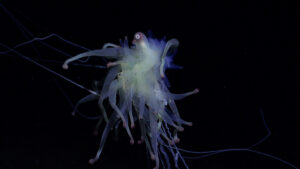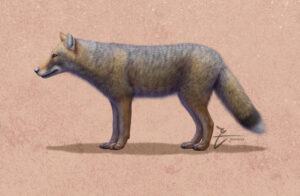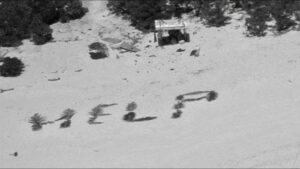A passion for the natural world drives many of our adventures. And when we’re not actually outside, we love delving into the discoveries about the places where we live and travel. Here are some of the best natural history links we’ve found this week
Female elephant seals ravenous after breeding: A female elephant seal spends around 23 hours a day hunting after the winter breeding season. They hunt in the twilight zone of the northern Pacific Ocean, down to depths of 1,500m. During these deep dives, they hold their breath for about 1.5 hours at a time. Every day, they eat up to 2,000 small fish. During their first two months after the breeding season, they will pack on 100kg.
China successfully lands a spacecraft on Mars: China has successfully landed the six-wheeled Zhurong robot on Mars. Zhurong refers to the mythological Chinese god of fire. It is the country’s first mission to Mars and it makes them the third nation to land a spacecraft on the planet. Zhurong touched down on Utopia Planitia, in Mars’s northern hemisphere. Scientists will try to get at least 90 Martian days of service out of the spacecraft, focusing on Martian geology.
Ceratopsid dinosaur uncovered in New Mexico: Researchers have identified a new genus and species of horned (Ceratopsid) dinosaur from an incomplete skeleton found in New Mexico. The skeleton dates back 82 million years. At just over four metres long, it is also one of the smallest horned dinosaurs.

A Pizzly bear. Photo: polarjournal.ch
The Polar Bear – Grizzly Hybrid: Grizzly bears and polar bears in Canada are extending their ranges in search of food. Every now and then, the bears meet. Even more occasionally, they successfully mate. The outcome is a Pizzly if the father is a polar bear, or a Grolar is the father is a grizzly. The hybrids have a mix of adaptions for land, sea, and ice. Polar bear researcher Dr. Evan Richardson comments that as they have a “little bit of everything”, they make a “pretty poor polar bear and a pretty poor grizzly”.
Mars may still have active volcanoes
Active volcanoes on Mars: Previous studies suggested that volcanic activity on Mars occurred three to four billion years ago. But it turns out that eruptions may have occurred as recently as 50,000 years ago. The young age of one volcanic deposit “raises the possibility that there could still be volcanic activity on Mars”.
Fanged frog found in the Philippines: Several years ago, genetic samples of a fanged frog were collected on Mindoro Island in the Philippines. As the frog was almost identical to another species, scientists assumed that the two were the same. But one researcher noted that this frog was separated by miles of ocean from the rest of its species and sounded slightly different. The frog’s genome has now confirmed that the Mindoro fanged frog is its own distinct species.

A fanged frog. Photo: University of Kansas
Weird dreams train us for the unexpected: Scientists are divided on why we dream, but a new theory suggests that our baffling dreams leave us better equipped to cope with the unexpected. As we age, our days become more similar, but our dreams can deviate from that. “It is the very strangeness of dreams in their divergence from waking experience that gives them their biological function,” says Massachusetts neuroscientist Erik Hoel.
First preserved cave bear unearthed on Arctic Island: A fully preserved cave bear has been found on the island in the Russian Arctic. Before this, only bones of cave bears have been found. “[We have] a whole bear carcass with soft tissues…completely preserved, with all internal organs in place, including even its nose,” said scientist Lea Grigorieva. The cave bear became extinct 15,000 years ago. Radiocarbon analysis will determine the age of the specimen. A second well-preserved cave bear, a cub, has also turned up in Yakutia, a region in northeastern Siberia.
Antibiotics help coral too
Amoxicillin slows coral disease: Corals infected with stony coral tissue loss disease (SCTLD) respond well to amoxicillin. When slathered in the antibiotic, the lesions on the coral stopped spreading in one Florida test. It isn’t a total cure but buys scientists time to search for the cause of the disease. “Overall, putting these corals in this treatment program saves them,” says marine biologist Karen Neely. “We don’t get happy endings very often.”

Treating infected corals with an antibiotic paste (white bands, left) stopped a tissue-eating lesion from spreading, even 11 months later (right). Photo: Shilling, Combs and Voss/Scientific Reports 2021






